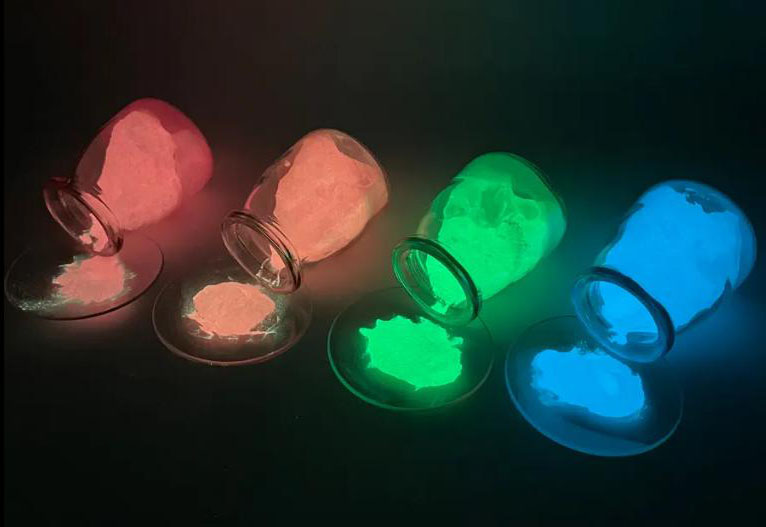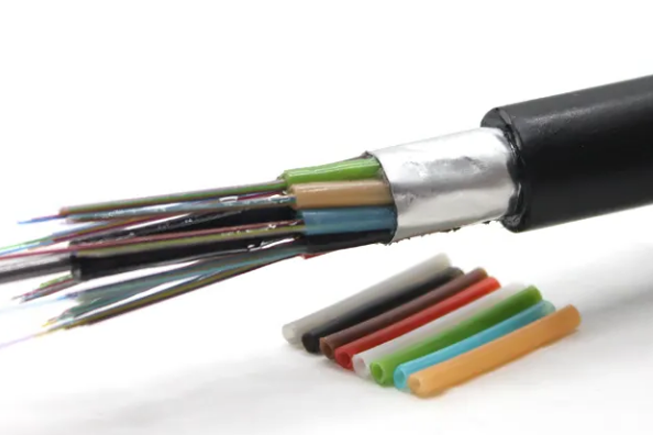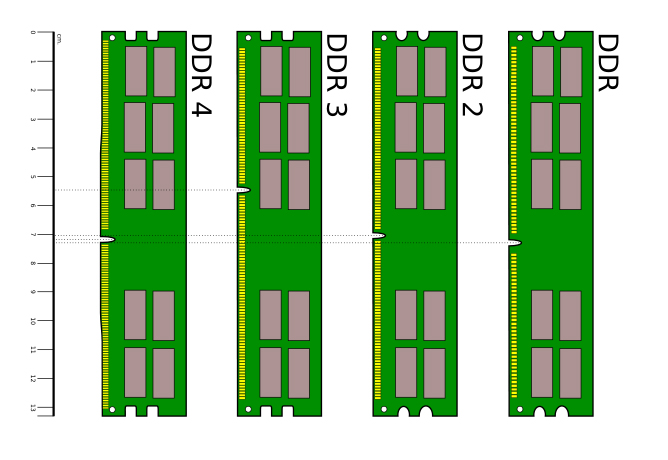
Introduction to Fluorescent Powders: Different Types and Application Areas
1. Introduction
Fluorescent powders, also known as phosphors, are materials that emit visible light when exposed to electromagnetic radiation, such as ultraviolet (UV) light, X-rays, or electron beams. This luminescent property makes them indispensable in a wide range of applications, from lighting and display technologies to security and decorative purposes. The ability of fluorescent powders to convert energy from one wavelength to another with high efficiency is fundamental to their functionality in modern electronic devices and industrial processes.

2. Types of Fluorescent Powders
Fluorescent powders are classified into several categories based on their chemical composition and structural characteristics. The primary types include organic fluorescent powders, inorganic fluorescent powders, oxide fluorescent powders, nitride fluorescent powders, semiconductor quantum dots, and organic small molecule and polymer fluorescent powders.
2.1. Organic Fluorescent Powders
Characteristics:
Organic fluorescent powders are composed primarily of organic molecules or polymers. They are known for their vibrant color emission, high photoluminescence efficiency, and tunable emission spectra. However, they generally exhibit lower thermal and chemical stability compared to their inorganic counterparts, making them more susceptible to degradation under prolonged exposure to light and elevated temperatures.
Key Features:
- High Color Purity: Organic fluorescent powders can emit highly pure colors, making them ideal for applications requiring precise color reproduction.
- Tunable Emission: By modifying the molecular structure, the emission wavelength of organic fluorescent powders can be finely tuned to achieve desired color outputs.
- Flexibility: Their molecular structure allows for the synthesis of flexible and printable fluorescent materials.
Primary Applications:
- Organic Light-Emitting Diodes (OLEDs): Organic fluorescent powders are extensively used in OLED displays and lighting due to their ability to produce bright and vibrant colors.
- Flexible Displays: Their inherent flexibility makes them suitable for use in flexible and bendable display technologies.
- High-Resolution Displays: Organic fluorescent materials are favored in high-resolution screens where precise color control is essential.
2.2. Inorganic Fluorescent Powders
Characteristics:
Inorganic fluorescent powders are derived from inorganic compounds, such as metal oxides, sulfides, and halides. They are renowned for their superior thermal and chemical stability, longer operational lifespans, and consistent luminescent properties under harsh environmental conditions.
Key Features:
- High Stability: Inorganic fluorescent powders maintain their luminescent properties over extended periods and under varying environmental conditions.
- Durability: These materials are resistant to degradation caused by moisture, heat, and chemical exposure.
- Efficient Light Conversion: They exhibit high conversion efficiency, making them ideal for energy-efficient lighting solutions.
Primary Applications:
- LED Lighting: Inorganic fluorescent powders are fundamental in LED technologies, particularly in white LEDs where they convert blue or UV light into white light.
- Display Technologies: Used in backlighting for LCDs and other display screens to enhance brightness and color accuracy.
- Security and Authentication: Employed in anti-counterfeit measures due to their unique emission characteristics.
2.3. Oxide Fluorescent Powders
Common Types:
Oxide fluorescent powders primarily consist of metal oxides, with the Yttrium Aluminum Garnet (YAG) series being the most prevalent. Doped YAG powders, such as YAG:Ce (Cerium-doped YAG), are widely used in the lighting industry.
Application Characteristics:
- High Light Conversion Efficiency: Oxide fluorescent powders efficiently convert excitation energy into visible light, ensuring bright and uniform illumination.
- Thermal Stability: They can withstand high operational temperatures without significant degradation, making them suitable for high-power applications.
- Color Rendering: YAG:Ce, for example, provides excellent color rendering properties, enhancing the quality of white light produced by LEDs.
Primary Applications:
- White LEDs: YAG-based phosphors are commonly used in white LED production, where they convert blue LED light into white light with desirable color temperatures.
- High-Brightness Lighting: Used in applications requiring intense and stable light output, such as automotive headlights and general lighting.
- Display Backlighting: Enhances the brightness and color fidelity of display screens.
2.4. Nitride Fluorescent Powders
Common Types:
Nitride fluorescent powders are typically based on nitrides of elements like gallium and aluminum. Gallium Nitride (GaN) doped with rare earth elements is a prominent example.
Application Characteristics:
- Exceptional Thermal Resistance: Nitride fluorescent powders maintain luminescent performance even at elevated temperatures, ensuring reliability in high-power applications.
- High Efficiency: They possess high quantum efficiency, enabling effective light emission with minimal energy loss.
- Narrow Emission Peaks: This allows for precise color control, which is essential in high-fidelity display technologies.
Primary Applications:
- Blue and UV LEDs: GaN-based phosphors are essential in the production of blue and ultraviolet LEDs, which are then used to create white light through phosphor conversion.
- Solid-State Lighting: Employed in high-efficiency and long-lasting lighting solutions.
- Display Technologies: Utilized in backlighting for advanced display systems requiring precise color management.
2.5. Semiconductor Quantum Dots
Types and Characteristics:
-
CdSe Quantum Dots (Cadmium Selenide):
- Emission Tunability: The emission wavelength of CdSe quantum dots can be precisely controlled by adjusting their size, allowing for a wide range of colors.
- High Quantum Yield: They exhibit strong luminescence, making them highly efficient in light emission.
- Environmental Concerns: The presence of toxic heavy metal cadmium raises environmental and health concerns, limiting its use in certain applications.
-
InP Quantum Dots (Indium Phosphide):
- Non-Toxic Composition: InP quantum dots are emerging as environmentally friendly alternatives to CdSe, eliminating concerns related to heavy metal toxicity.
- Comparable Performance: They offer similar luminescent properties and tunability as CdSe quantum dots, making them suitable for various applications.
- Cost and Scalability: InP quantum dots are becoming more cost-effective and scalable for commercial use as manufacturing techniques improve.
Application Advantages:
- Quantum Size Effect: Their emission properties are highly dependent on particle size, allowing for precise control over the color emitted.
- Broad Spectrum: They can cover a wide range of the visible spectrum, from ultraviolet to near-infrared wavelengths.
- Versatility: Suitable for use in high-resolution displays, optical communication, and biomedical imaging.
Primary Applications:
- High-Resolution Displays: Quantum dots enhance color accuracy and brightness in advanced display technologies such as QLED TVs and monitors.
- Light-Emitting Devices: Used in backlighting for displays and in lighting applications requiring precise color tuning.
- Biomedical Imaging: Employed as fluorescent markers in bioimaging due to their bright and stable emission properties.
2.6. Organic Small Molecule and Polymer Fluorescent Powders
Types and Characteristics:
-
Organic Small Molecule Fluorescent Powders:
- High Luminescence Efficiency: These powders exhibit strong fluorescence, making them suitable for applications requiring bright and intense light emission.
- Good Color Purity: They provide precise and vibrant colors, enhancing the visual quality of displays and lighting devices.
- Solution Processability: Can be processed from solutions, enabling versatile manufacturing techniques such as printing and coating.
-
Polymer Fluorescent Powders:
- Polymer Matrix: These powders consist of fluorescent molecules embedded within a polymer matrix, enhancing mechanical properties and processability.
- Flexibility: The polymer matrix imparts flexibility, making them suitable for applications in flexible and wearable devices.
- Enhanced Stability: The encapsulation within polymers can improve the environmental stability of the fluorescent materials.
Application Scenarios:
- OLED Displays: Utilized in OLED technology to produce vibrant and high-resolution displays with efficient light emission.
- Flexible Lighting Devices: Ideal for applications requiring bendable or stretchable light sources, such as wearable electronics and flexible screens.
- High-Performance Displays: Meet the demands of high-definition and high-refresh-rate displays by providing consistent and bright color output.
Primary Applications:
- Display Technologies: Enhance the quality and performance of various display systems, including smartphones, tablets, and televisions.
- Flexible Lighting: Used in innovative lighting solutions that require flexibility and adaptability, such as wearable lights and flexible signage.
- High-Resolution Screens: Suitable for advanced display technologies that demand high color accuracy and brightness.
3. Application Areas of Fluorescent Powders
Fluorescent powders find extensive applications across various industries due to their unique luminescent properties. The primary application areas include the LED industry, anti-counterfeit ink applications, and several other fields such as lighting, art, security, and entertainment.
3.1. LED Industry
The LED industry is one of the most significant sectors utilizing fluorescent powders. LEDs (Light Emitting Diodes) rely on phosphors to convert electrical energy into visible light with high efficiency and low energy consumption.
Key Applications within the LED Industry:
-
White LED Manufacturing:
- Phosphor Conversion: White LEDs are typically produced by combining a blue or UV LED chip with a yellow or white fluorescent powder. The phosphor absorbs part of the emitted light and re-emits it at different wavelengths, resulting in white light.
- Color Temperature Control: By selecting appropriate phosphor materials, manufacturers can achieve various color temperatures ranging from warm to cool white light, catering to different lighting needs and preferences.
-
Display Backlighting:
- LCD Backlights: Fluorescent powders are used in backlighting systems for Liquid Crystal Displays (LCDs) to provide uniform illumination and enhance color reproduction.
- QLED Displays: Quantum dot-based backlighting systems utilize fluorescent powders to achieve superior color accuracy and brightness in high-definition displays.
-
Energy Efficiency and Longevity:
- High Efficiency: Fluorescent powders with high quantum yields contribute to the overall energy efficiency of LED lighting by maximizing light output while minimizing energy consumption.
- Long Lifespan: Inorganic fluorescent powders, in particular, offer extended operational lifespans, reducing the need for frequent replacements and maintenance.
-
High-Power LED Applications:
- Thermal Management: Fluorescent powders used in high-power LEDs must withstand significant heat generation while maintaining consistent light emission.
- Bright and Stable Illumination: Ensuring bright, stable, and uniform light output in applications such as industrial lighting, automotive headlights, and street lighting.
3.2. Anti-Counterfeit Ink Applications
Fluorescent powders play a crucial role in enhancing security measures through anti-counterfeiting technologies. Their unique luminescent properties make them ideal for embedding invisible and tamper-proof markers in various high-value products and documents.

Key Applications in Anti-Counterfeiting:
-
Secure Printing:
- Currency: Incorporating fluorescent powders in banknotes provides an additional layer of security, making it difficult for counterfeiters to replicate the genuine design.
- Identification Documents: Passports, driver's licenses, and other official documents use fluorescent inks to embed hidden security features that can be easily verified under UV or specific lighting conditions.
-
Product Authentication:
- Packaging Labels: Fluorescent powders are used in labels and packaging materials to create unique identifiers that authenticate genuine products, preventing the distribution of counterfeit goods.
- Barcodes and QR Codes: Integrating fluorescent markers in barcodes enhances data security and traceability, enabling quick and reliable verification.
-
Document Security:
- Contracts and Legal Documents: Embedding fluorescent inks in important documents ensures their authenticity and protects against unauthorized alterations or forgery.
- Educational Certificates: Diplomas and other academic certificates utilize fluorescent markers to verify legitimacy and uphold institutional integrity.
-
Electronic Tags and Smart Packaging:
- Dynamic Verification: Combining fluorescent powders with electronic technologies allows for the creation of smart labels that can provide real-time authentication and tracking information.
- Enhanced Security Features: Smart packaging with embedded fluorescent markers offers advanced security capabilities, such as tamper detection and supply chain monitoring.
Advantages in Anti-Counterfeiting:
- Invisible Security Features: Fluorescent markers are not visible under normal lighting, making them discreet and difficult to detect without specialized equipment.
- Complexity and Customization: The ability to create complex and customizable fluorescent patterns adds an extra layer of protection against sophisticated counterfeiting attempts.
- Easy Verification: Fluorescent inks can be quickly verified using standard UV lamps or specialized inspection tools, facilitating efficient authentication processes.
3.3. Other Application Areas
Beyond the LED industry and anti-counterfeiting measures, fluorescent powders are utilized in various other domains due to their versatile luminescent properties. These applications span lighting solutions, artistic endeavors, security documentation, and entertainment products.
Key Application Areas:
-
Lighting Solutions:
- Fluorescent Lamps: Traditional fluorescent lighting systems use phosphors to convert UV light generated by mercury vapor into visible light, providing energy-efficient lighting for indoor and outdoor spaces.
- Roadway and Street Lighting: High-efficiency fluorescent powders are employed in street lamps and roadway lighting to ensure bright, uniform illumination while reducing energy consumption.
-
Artistic and Printing Applications:
- Colored Pigments: Fluorescent powders serve as vibrant pigments in artistic creations, providing striking and luminous color effects that enhance visual appeal.
- Specialty Printing: Used in printing applications that require bright, eye-catching colors, such as promotional materials, signage, and decorative prints.
-
Security and Documentation:
- Copy Paper: Incorporating fluorescent powders into paper enhances the brightness and clarity of printed text and images, while also adding a layer of security to protect against forgery.
- High-Security Documents: Legal contracts, certificates, and other important documents utilize fluorescent inks to ensure authenticity and prevent unauthorized alterations.
-
Entertainment Products:
- Glow-in-the-Dark Toys: Fluorescent powders are used in toys like glow-in-the-dark skateboards, flying discs, and magic cubes, providing vibrant and lasting luminescence for enhanced play experiences.
- Party Supplies and Decorations: Fluorescent materials create visually stunning effects in party decorations, lighting setups, and costume accessories, adding excitement and vibrancy to events.
Advantages in Other Applications:
- Enhanced Visibility: Fluorescent powders improve the visibility and aesthetic appeal of products, making them more attractive and engaging to consumers.
- Energy Efficiency: In lighting applications, fluorescent powders contribute to energy-efficient solutions that reduce electricity consumption while maintaining high brightness levels.
- Security Enhancement: In both documentation and product authentication, fluorescent powders provide reliable and tamper-proof security features that safeguard against counterfeiting and fraud.
- Creative Expression: In artistic and entertainment contexts, the vibrant colors and dynamic lighting effects of fluorescent powders enable creative and innovative designs that captivate audiences.
4. Conclusion
Fluorescent powders, with their diverse types and exceptional luminescent properties, are integral to numerous technological and industrial advancements. From the efficiency and precision required in the LED industry to the sophisticated security measures in anti-counterfeiting applications, fluorescent powders offer versatile solutions that meet a wide array of demands.
For those seeking high-quality fluorescent powders to advance their projects and applications, Stanford Optics offers a comprehensive selection of top-tier materials tailored to diverse needs. Whether you require organic or inorganic phosphors, semiconductor quantum dots, or specialized polymer-based fluorescent powders, Stanford Optics provides reliable and efficient solutions to meet the demands of cutting-edge technologies in lighting, display systems, security applications, and beyond. With a commitment to excellence and innovation, Stanford Optics serves as a trusted partner for researchers, engineers, and industry professionals looking to leverage the full potential of fluorescent powders in their endeavors.




